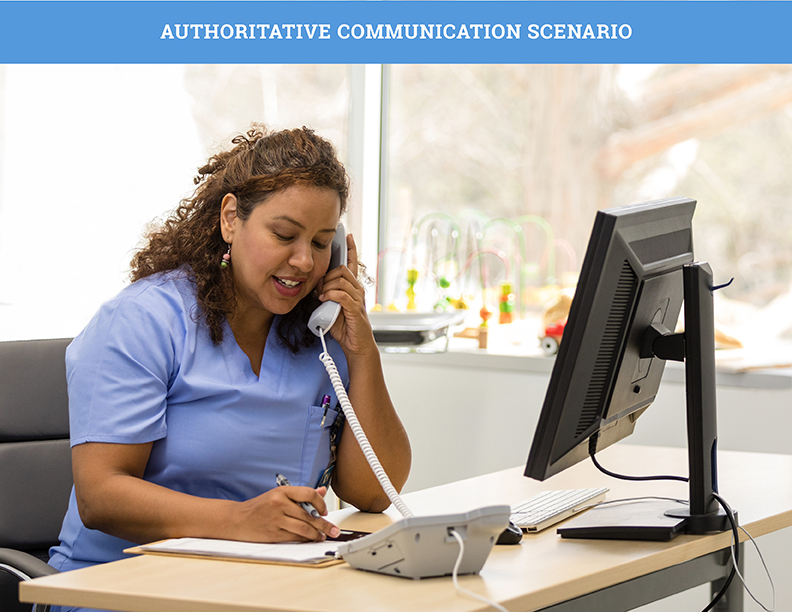Learn When to Use Authoritative and Collaborative Communication in Your Patient Education Encounters
Both collaborative and authoritative communication approaches have value in educating and engaging patients. When deciding which style to use with each patient, oncology nurses must evaluate the individual, situation, and decision-making dynamics.
Collaborative Communication
With a collaborative approach, oncology nurses and patients work together as partners in the education process (https://www.theschwartzcenter.org/media/FINAL-CCC-Model-and-Framework.pdf). Both parties actively participate with a focus on shared decision-making.
Collaboration involves taking time to form a respectful and empathetic connection with patients and caregivers. Engaging empathetic listening and understanding is essential (https://doi.org/10.1186/s12912-021-00684-2) when developing two-way relationships. Nurses can create a safe space for open dialogue (https://www.theschwartzcenter.org/media/FINAL-CCC-Model-and-Framework.pdf) by reflecting their patients’ emotions, acknowledging their struggles, and validating their experiences.
Authoritative Communication
Although collaboration is the primary communication approach for patient education, some situations require authoritative communication, particularly when nurses are conveying urgent information or critical directions (https://doi.org/10.1111/nicc.12237). With a focus on the immediacy of the situation and the steps the patient needs to take, nurses provide clear recommendations, reinforce the importance of following the prescribed treatment plan, and address patients’ concerns. The conversation is directive, but nurses still provide opportunities for patients to ask questions and seek clarification (https://doi.org/10.1111/nicc.12237).
How to Use Them in Clinical Practice
Both communication styles have strengths and appropriate contexts. The choice between the two depends on factors such as (https://doi.org/10.1111/nicc.12237):
- Patient preferences
- Complexity of the medical condition
- Urgency of treatment decisions
- Healthcare professionals’ judgment
In practice, nurses may find that a blended approach that incorporates elements of both styles allows them to deliver essential information and guidance while supporting patient engagement and autonomy.
Click through the example scenarios below to understand the difference between collaborative and authoritative communication in oncology nursing practice.
Collaborative Communication Scenario (https://voice.ons.org/sites/default/files/2023-08/CollaborativeCommunication.pdf)
 (https://voice.ons.org/sites/default/files/2023-08/CollaborativeCommunication.pdf)
(https://voice.ons.org/sites/default/files/2023-08/CollaborativeCommunication.pdf)
Authoritative Communication Scenario (https://voice.ons.org/sites/default/files/2023-08/AuthoritativeCommunication.pdf)
 (https://voice.ons.org/sites/default/files/2023-08/AuthoritativeCommunication.pdf)
(https://voice.ons.org/sites/default/files/2023-08/AuthoritativeCommunication.pdf)
